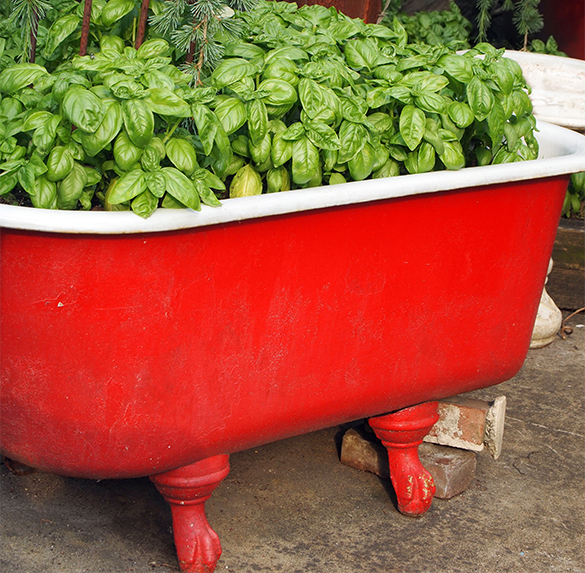
How To Make A Container Garden for Mother’s Day
At Modern Kids Design, we like to brainstorm ways to celebrate and add a creative twist to the holidays. For some reason, this year, container gardens came to mind. Imagine spending some time with your mother (and/or your kids) and planting a fun, healthy garden on Mother’s Day!
Container Gardens Offer Lots of Variety!
One of the things we really like about container gardens is that you can maintain them inside or outside your home. Okay, when it comes to inside gardens you may call them windowsill gardens but you get the idea. 🙂 You are not constrained by space and all that is required is a bit of imagination. We love that when you don’t have the yard space or time to grow a traditional garden, you can still grow some of your own fresh food and herbs in containers.
Salad greens, tomatoes, and herbs are among the many options for raising beautiful, delicious food your family will enjoy. Container gardening is also a fun way to get children involved in growing and tasting healthy food at its freshest. Plus, it’s a wonderful way for them to learn about the environment.
Getting Started Planning Your Container Garden
What to Grow
The first step to successful container gardening is to focus on vegetables and herbs you and your family already like. Lettuce and tomatoes are popular favorites that come in a variety of flavors and colors that look inviting to all ages. And don’t forget to throw in a couple extra of mom’s favorites for Mother’s Day!
Where to Grow
Small containers tend to dry out quickly, so choose larger ones that will keep your soil moist and require less watering. Or select self-watering containers that come in many shapes and sizes and require little attention. Ceramic or terra-cotta pots work well in warm climates. Concrete-fiberglass containers are lightweight and easier to move. Wood holds water well. Any container you use will need drainage holes on the bottom.
Choose where you want to place your containers before adding soil, because they will be very heavy once filled. The best-growing medium to use is actually a “soilless” mixture of organic and inorganic materials. These mixes hold moisture well and don’t compact down the way plain garden soil tends to, and they are less likely to harbor diseases or pests. Be sure to wet the mix thoroughly before planting your seeds or seedlings. Lay a sheet of newspaper over the drainage holes to keep the growing mix from washing out.
Most vegetables and plants like at least six hours of sunlight each day. East-facing areas that get morning sun are ideal for herbs and greens because these delicate plants appreciate afternoon shade on hot days. Most greens, such as lettuce, arugula, kale and Asian greens, do fine in partial shade. Cherry tomatoes also grow well with less direct sun than full-size tomatoes need, and their compact plant size is just right for growing in pots.
How to Grow
Lettuces and other greens are easy to grow from seed. Any kind of lettuce can be grown as a baby lettuce or salad mix; simply plant the seeds about two inches apart. As they reach the right size for eating, pick the outer leaves and let the inner leaves continue to grow. For a continuous supply of fresh greens, you can remove the older plants and sow fresh ones up to six weeks before the first expected fall frost. Greens are hardy and will tolerate several frosts.
Herbs and tomatoes are best grown from transplants because they can be hard to start from seed. Nurseries and garden centers sell herb and vegetable seedlings, and their staff can steer you toward compact or dwarf varieties that will look good in pots. Your local farmers market is an excellent place to look for seedlings because the farmers will know from experience which varieties grow best in your area. They can also give you the most accurate advice for successful crops.
After your seedlings have their first true leaves, feed them with compost or a complete organic fertilizer about every two weeks. Keep their growing medium moist but not sodden.
Almost any vegetable or herb can be grown in a container. Below are a few suggestions for tasty, compact varieties.
- Basil: “Eleonora,” “Elidia.”
- Lettuce: “Red Sails,” “Salad Bowl,” “Speckles,” “Tom Thumb.”
- Nasturtiums: “Jewel Mix.”
- Parsley: “Giant of Italy,” Fidelio,” “Titan.”
- Potatoes: “Purple Viking,” “Red Gold,” “Yukon Gold.”
- Tomatoes: “Japanese Black Trifele,” “Juliet,” “Sungold,” “Sweet 100.”
Time = Mother’s Day Success!
Sometimes the best gift you can give is your time. Why not share some time and plant a container garden this Mother’s Day? Not only will you get to reap the bounty of your delicious vegetables and herbs, but you’ll also have the memories of creating a beautiful space together. Happy Mother’s Day!




